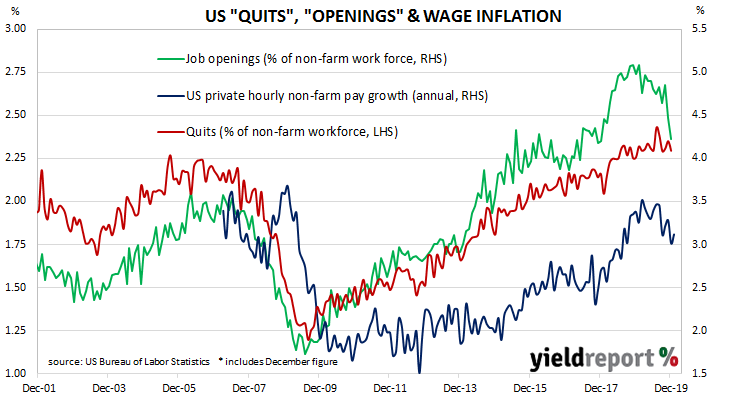The number of US employees who quit their jobs as a percentage of total employment increased slowly but steadily after the GFC. It peaked in August 2018, stabilised and then remained largely unchanged through the remainder of 2018 before it hit a new peak in July 2019. It has tracked sideways since then.
Figures released as part of the most recent JOLTS report show the quit rate has been maintained at just under the record levels reached in July and August. 2.3% of the non-farm workforce left their jobs voluntarily in December, down from November revised figure of 2.4% but the same rate as in pretty much all of 2019.
Quit numbers were highest in the accommodation/food services sector while the retail trade sector recorded the largest fall, dwarfing changes in other sectors. Overall, the total number of quits for the month decreased from November’s revised figure of 3.568 million to 3.488 million in December.
Total job openings fell noticeably for a second consecutive month. Total vacancies during December fell by 364,000 from November’s revised figure of 6.787 million to 6.423 million, driven by reductions in the “Transportation, warehousing and utilities” and “Health care/social assistance” sectors. The majority of sectors experienced a contraction but the “arts/entertainment” and construction sectors provided a modest offsetting effect. Overall, 13 out of 19 sectors experienced fewer job openings than in the previous month.
NAB Head of FX strategy Ray Attrill said the total was less than expected and the fall suggests “a significantly slower monthly payroll gains down the not-too-distant track.” However, ANZ economist suggested “job openings are falling because the participation rate is rising” while admitting “it could also reflect weakening hiring demand.”

